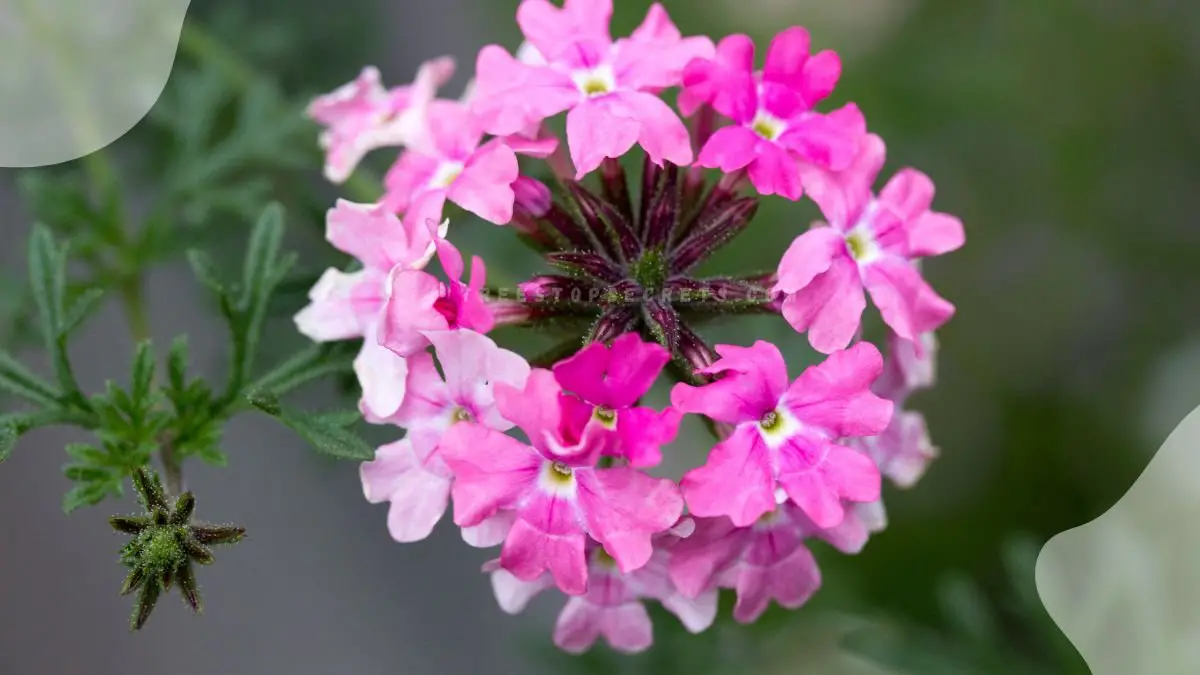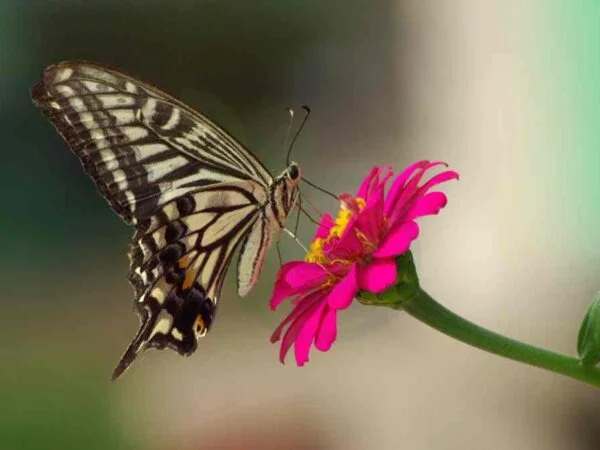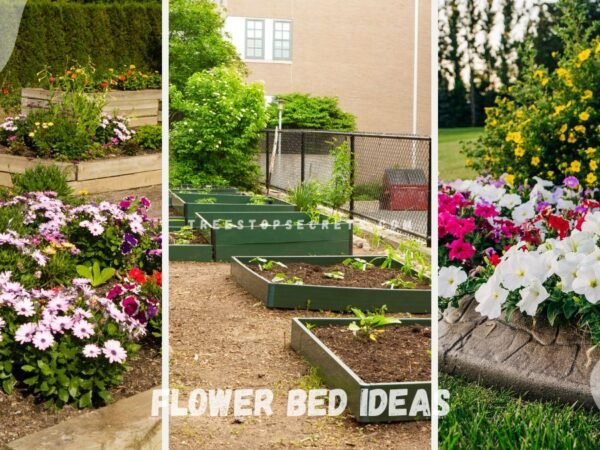If you're looking for vibrant and low-maintenance plants, perennial flower verbena is a fantastic choice. With its long blooming season and ability to thrive in various conditions, this resilient native perennial flower can add continuous color to your garden. Whether you're an experienced gardener or just starting out, I can help you make the most of your verbena plants. Learn how to care for these beautiful flowers and enjoy a garden that flourishes year after year.
Perennial flower verbena is a popular choice for gardeners due to its hardiness and long blooming period. This plant typically blooms from spring to fall, providing vibrant clusters of small flowers in shades of purple, pink, red, and white. Verbena prefers full sun and well-drained soil, making it ideal for borders, containers, and ground covers. It is also drought-tolerant, requiring minimal watering once established. Regular deadheading can encourage more blooms, and light pruning helps maintain its shape. Perennial verbena attracts butterflies and bees, adding a dynamic and beneficial aspect to your garden.
Ready to enhance your garden with perennial flower verbena? There's so much more to learn about maximizing its beauty and growth. Let me guide you through expert tips and techniques for a flourishing garden.
Key Takeaways
- Plant verbena in well-draining soil and provide ample sunlight for optimal growth.
- Deadhead verbena regularly to encourage continuous blooming throughout the season.
- Water verbena consistently, ensuring the soil is moist but not waterlogged to prevent root rot.
- Keep an eye out for common issues like powdery mildew and aphids, addressing them promptly to maintain plant health.
- Choose verbena cultivars based on your region's climate and the desired color scheme of your garden.
- Regularly fertilize verbena with a balanced fertilizer to promote healthy growth and vibrant blooms.
Verbena Life Cycle
Perennial or Annual
Perennial verbena plants return year after year, while annuals complete their life cycle in one growing season. Gardeners often confuse verbena's classification due to variations within the species. Factors like climate and care determine if verbena grows as an annual or perennial.
Growth Rate Insights
Perennial verbena typically grows at a moderate pace, establishing strong roots for long-term growth. Various factors influence the growth rate of verbena, such as sunlight, soil quality, and water availability. Compared to annual varieties, perennial verbena tends to grow steadily over multiple seasons.
Types of Verbena
Garden Verbena
Garden verbena, a popular choice for gardens, blooms in vibrant colors attracting butterflies and bees. This species thrives in full sun and well-draining soil, making it ideal for flower beds. With its heat and drought tolerance, newer garden verbena hybrids require minimal maintenance.
Blue Vervain
Blue vervain, a native wildflower, attracts pollinators like bees and butterflies to garden landscapes. Thriving in hardiness zones 3-8, blue vervain flourishes in moist soil conditions near water features. Its ability to grow in wet areas makes it a great choice for rain gardens and pond edges.
Purpletop Vervain
Purpletop vervain is a favorite among pollinators due to its abundant nectar production. In warm climates, this species reseeds easily, creating beautiful colonies in gardens. Originating from South America, purpletop vervain adds a touch of exotic beauty to any landscape.
Rose Verbena
Rose verbena, native to the mid-South United States, blooms in shades of pink and purple, enhancing garden aesthetics. Thriving in hardiness zones 7-10, rose verbena prefers well-drained soil with occasional watering. Its ability to withstand drier conditions makes it a resilient choice for xeriscapes.
Tuberous Verbena
Tuberous verbena stands out with its unique tuberous roots that store nutrients for sustained growth. This species prefers rich, well-draining soil and regular deadheading to promote continuous blooming. Providing adequate sunlight and moderate watering ensures healthy growth of tuberous verbena plants.
Lemon Verbena
Lemon verbena, known for its citrusy fragrance, serves both culinary and medicinal purposes. Used in teas and desserts, this herb offers a refreshing lemon flavor. Thriving in warm climates with well-drained soil and ample sunlight, lemon verbena plants require minimal care for optimal growth.
Planting Verbenas
Best Planting Times
When planting perennial verbena, it is best to do so in the spring after the last frost date. This timing allows the plants to establish before the summer heat. Avoid planting during the hot summer months to prevent stress on the plants.
Consider the seasonal variations when planting verbena. In cooler climates, planting can also be done in early fall. Warm soil temperatures are crucial for successful establishment, promoting root growth and overall plant health.
Specific weather conditions to consider during planting include moisture levels. Verbena plants prefer well-draining soil to prevent root rot. Watering is essential, especially during the first few weeks after planting to help the roots settle.
Height and Spread
Perennial verbena plants typically reach a height of around 6-12 inches with a spread of 12-24 inches. However, there are variations among different verbena species. Some may grow taller or have a more extensive spread based on their genetic makeup.
To manage the height and spread of verbena in gardens, pruning is recommended. Regularly trimming back the plants can promote bushier growth and prevent them from becoming leggy. Trimming also encourages continuous blooming throughout the season.
When selecting a location for planting verbena, consider their height and spread requirements. Placing taller varieties at the back of flower beds and shorter ones at the front creates a visually appealing layered effect in the garden.
Ornamental Features
Color and Texture
Perennial verbena flowers come in a wide array of vibrant colors ranging from soft pastels to bold, eye-catching hues. The flowers boast varied textures, from delicate petals to clusters of tiny blooms, adding visual interest to any garden. Verbena's color diversity includes shades of pink, purple, red, and white, making it a versatile choice for landscaping.
In garden landscapes, verbena's colorful blooms create a striking focal point, attracting bees and butterflies with their nectar-rich flowers. The contrast of different hues in verbena varieties adds depth and dimension to flower beds and borders, enhancing the overall aesthetic appeal of the garden. Gardeners can mix and match verbena colors to create stunning color combinations that complement each other.
- Pros:
- Diverse range of vibrant colors
- Varied textures add visual interest
- Attracts pollinators like bees and butterflies
- Cons:
- Some varieties may require specific care conditions
- Intense sunlight can fade certain colors over time
Landscape Use
Perennial verbena is prized for its versatility in landscape design, offering numerous ways to enhance outdoor spaces. Whether used as ground cover, in hanging baskets, or as part of mixed plantings, verbena adds colorful accents to gardens throughout the growing season. Incorporating verbena in garden designs brings a touch of elegance and charm to outdoor settings.
Gardeners can maximize the aesthetic impact of verbena by planting it in well-drained soil and providing ample sunlight. This hardy plant thrives in various settings, including rock gardens, borders, and containers, making it a versatile choice for landscaping projects. With proper care and maintenance, verbena can bloom profusely and attract beneficial insects to the garden.
- Ways to incorporate verbena in landscaping:
- Planting in flower beds for colorful borders
- Using hanging baskets for cascading displays
- Mixing with other flowering plants for dynamic arrangements
- Tips for maximizing aesthetic impact:
- Ensure proper sunlight exposure for healthy growth
- Deadhead spent blooms to encourage continuous flowering
- Water consistently but avoid overwatering to prevent root rot
Care and Maintenance
Watering and Feeding
Perennial verbena requires consistent watering to thrive in various growing conditions. Water deeply but infrequently, allowing the soil to dry out slightly between waterings. Overwatering can lead to root rot, so it's crucial to strike a balance. Consider using a soaker hose or drip irrigation system to provide slow, deep watering.
Feeding your verbena plants is essential for ensuring robust growth and abundant blooms. Use a balanced fertilizer with equal parts nitrogen, phosphorus, and potassium. Apply the fertilizer in early spring as new growth emerges, then again in midsummer to sustain flowering. Avoid over-fertilizing, as this can result in excessive foliage growth at the expense of flowers.
Proper watering and feeding schedules are key to maintaining healthy perennial verbena plants. Regularly check the soil moisture levels by inserting your finger into the soil. Adjust watering frequency based on the plant's needs and the prevailing weather conditions. Consistent feeding throughout the growing season will support vigorous growth and vibrant blooms.
Pruning and Deadheading
Pruning and deadheading play a vital role in promoting the longevity and habit of perennial verbena plants. Regular pruning helps maintain a compact growth habit and encourages continuous blooming throughout the season. Deadheading, or removing spent flowers, redirects the plant's energy towards producing new blooms.
To prune verbena plants, use sharp, clean pruners to trim back leggy or overgrown stems. Focus on cutting above a set of leaves or nodes to encourage new growth. Deadheading involves snipping off faded flowers just above a set of healthy leaves or buds. This practice prevents seed formation and encourages the plant to produce more flowers.
Regular pruning and deadheading not only enhance the aesthetic appeal of verbena but also stimulate new growth and flowering. By removing old, spent blooms promptly, you prevent the plant from expending energy on seed production. This redirection of resources results in a more prolific blooming cycle, ensuring a beautiful display all season long.
Common Challenges
Pest Problems
Perennial verbena plants are susceptible to aphids and spider mites, common pests that can damage the plant by sucking sap. To prevent infestations, regularly inspect the plants for any signs of pests like distorted leaves or webbing. Introducing beneficial insects such as ladybugs can help control aphid populations naturally.
Disease Issues
One of the most common diseases affecting perennial verbena is powdery mildew, which appears as a white powdery substance on the leaves. To prevent diseases, ensure proper air circulation by spacing plants adequately and avoiding overhead watering. Applying neem oil can act as a natural fungicide to combat powdery mildew effectively.
Cultivars and Species
Popular Varieties
Verbena bonariensis:
- Known for its tall, slender stems topped with clusters of purple flowers.
- Attracts pollinators like bees and butterflies, making it a garden favorite.
- Thrives in full sun and well-drained soil, perfect for adding height to borders.
Verbena rigida:
- Features vibrant purple flowers on low-growing, spreading plants.
- Ideal for rock gardens or cascading over walls due to its trailing nature.
- Requires hybrida seeds for propagation and prefers sunny locations with good airflow.
Verbena hybrida 'Homestead Purple':
- Boasts deep purple blooms that cover the plant throughout the season.
- Resistant to powdery mildew, a common issue with verbena plants.
- Flourishes in hot, humid climates and benefits from regular deadheading.
Verbena canadensis:
- Showcases bright red, pink, or purple flowers on compact, mounding plants.
- Perfect for edging beds or mass planting in garden landscapes.
- Adaptable to various soil types but thrives in well-drained, fertile soil.
Verbena hastata:
- Displays dense spikes of tiny purple flowers on upright stems.
- Well-suited for naturalized areas or wildflower gardens.
- Grows well in moist soil conditions, making it a great choice for rain gardens.
Notable Characteristics
- Drought-tolerant varieties suitable for xeriscaping include Verbena bonariensis and Verbena rigida.
- Verbena hybrida cultivars offer a wide range of colors, from pinks to purples and whites.
FAQs on Verbena
Planting Verbena
When should I plant perennial verbena? Plant perennial verbena in the spring after the last frost date or in the fall.
How do I plant verbena seeds? verbena seeds indoors 8-10 weeks before the last frost or directly in the garden after the last frost.
Watering and Sunlight
How often should I water verbena plants? Water verbena plants deeply once a week, ensuring the soil is well-drained to prevent root rot.
Does verbena need full sun? Yes, verbena thrives in full sun, requiring at least 6-8 hours of sunlight per day for optimal growth.
Pruning and Maintenance
Should I deadhead my verbena plants? Deadheading verbena plants regularly encourages continuous blooming throughout the growing season.
How do I overwinter perennial verbena? Mulch around the base of perennial verbena plants in late fall to protect them from harsh winter conditions.
Common Issues and Troubleshooting
Why are my verbena leaves turning yellow? Yellowing verbena leaves may indicate overwatering or poor soil drainage; adjust watering habits accordingly.
How can I prevent powdery mildew on my verbena plants? Ensure good air circulation around verbena plants, avoid overhead watering, and apply fungicidal spray as a preventive measure.
Summary
You've learned about the life cycle, types, planting, ornamental features, care, challenges, cultivars, and FAQs related to verbena. Understanding these aspects will help you cultivate healthy and vibrant verbena plants in your garden. Remember to choose the right type of verbena based on your climate and preferences. Ensure proper planting and maintenance to enjoy the beautiful blooms and fragrant foliage that verbena offers.
Incorporate these tips into your gardening routine to ensure the success of your verbena plants. Experiment with different cultivars and species to add variety and color to your garden. By following these guidelines, you can create a flourishing garden filled with the beauty and charm of verbena plants.
Frequently Asked Questions
What is the ideal planting location for verbena flowers?
Verbena thrives in well-draining soil and full sun. Plant them in areas with good air circulation to prevent mildew.
How often should I water verbena plants?
Water verbena plants deeply once a week, allowing the soil to dry slightly between watering sessions. Adjust frequency based on weather conditions.
Do verbena plants require pruning?
Yes, regular deadheading and light pruning encourage continuous blooming and maintain plant shape. Trim back leggy growth to promote bushier growth.
Can verbena be grown in containers?
Yes, verbena grows well in containers with proper drainage holes. Use a well-draining potting mix and ensure the container receives adequate sunlight.
Are there any common pests or diseases that affect verbena plants?
Aphids, spider mites, and powdery mildew are common issues with verbena. Monitor plants regularly for signs of pests or diseases and take appropriate action promptly.
Image Source: Paid image from CANVA




